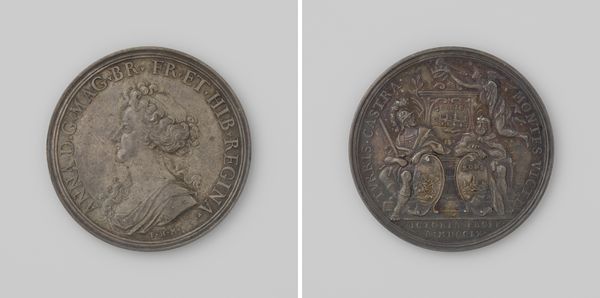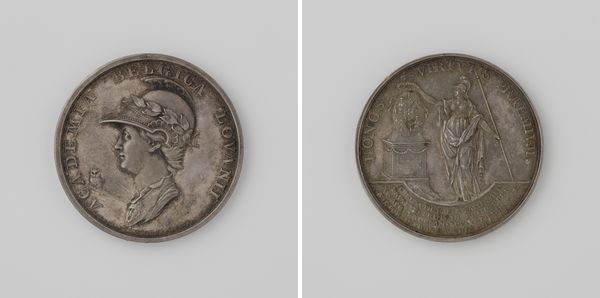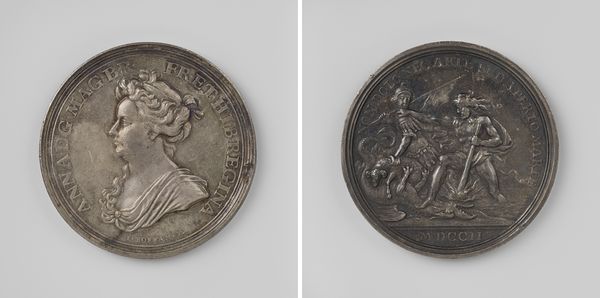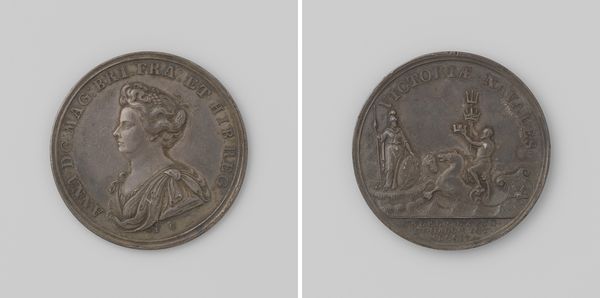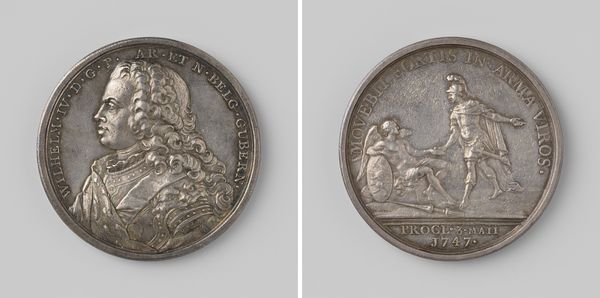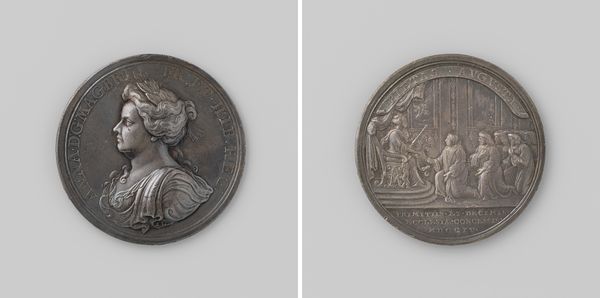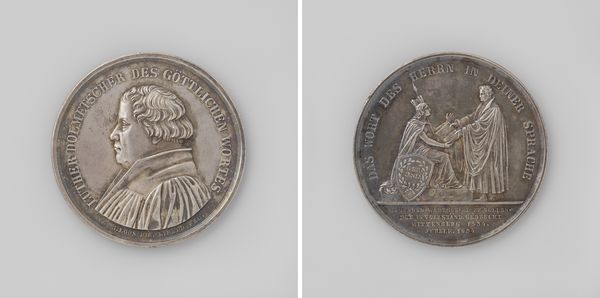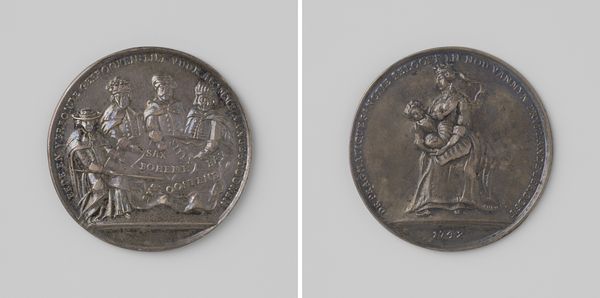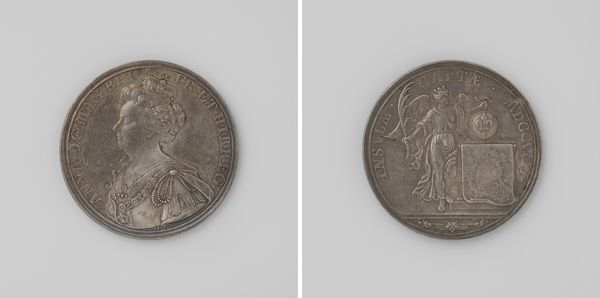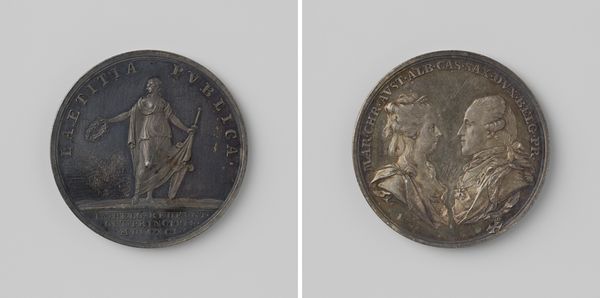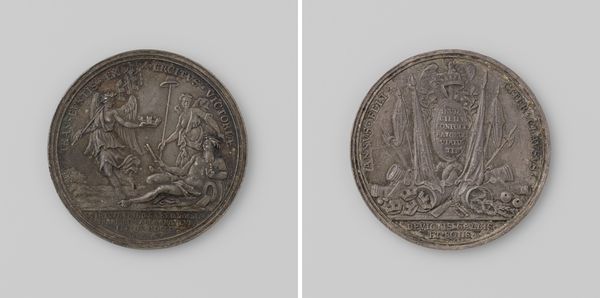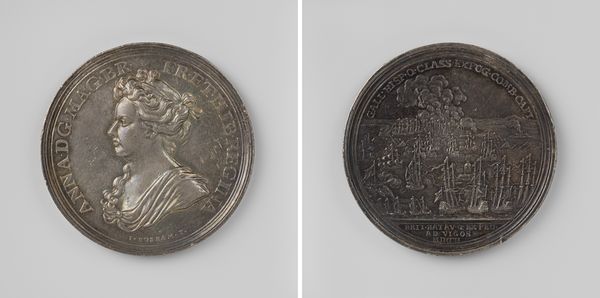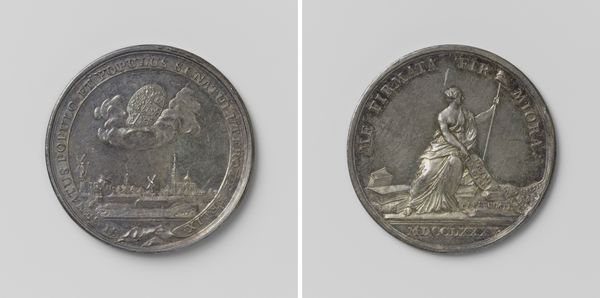
metal, sculpture, engraving
#
portrait
#
narrative-art
#
baroque
#
metal
#
sculpture
#
history-painting
#
engraving
Dimensions: diameter 4 cm, weight 25.74 gr
Copyright: Rijks Museum: Open Domain
Editor: Here we have a piece entitled "Overwinningen van de Engelsen," or "English Victories," a metal engraving by Georg Hautsch, dating to 1704. The detailed scenes appear almost like tiny, portable monuments. How would you unpack the layers of history embedded in this work? Curator: Well, it's fascinating to see how commemorative objects like this become instruments of power. Who commissioned it, and for what purpose? The inscription refers to victories – were these meant to solidify Queen Anne's legitimacy, perhaps after a period of political instability? Notice the prominent display of her portrait, and then the rather grandiose allegorical scene. It speaks volumes about the public role of imagery and the politics involved. Editor: I hadn't considered it in relation to Queen Anne solidifying power. Looking closely, what are we meant to understand from that allegorical scene on the reverse? Curator: It’s ripe with symbolism! The figure of Britannia is rather traditional, but then look at the context: maritime victories and overseas territories, symbolized perhaps by those pineapples. Each element aims to construct a specific narrative, presenting England as wealthy, triumphant, and divinely favored. How does this 'objective' historical narrative contrast with our understanding of this period today? Editor: So it’s about controlling the narrative. I wonder what audiences at the time made of it, compared to now? Curator: Exactly. Considering the distribution of such an object and its impact within the broader social and political context – that's where we really begin to understand the medal's significance beyond its aesthetic value. An object made to solidify specific political ideals and disseminate the narrative to the populace. Editor: This has certainly given me much to consider in terms of how art becomes a tool. Curator: And how power is so intimately linked with representation and controlled dissemination, indeed!
Comments
No comments
Be the first to comment and join the conversation on the ultimate creative platform.
